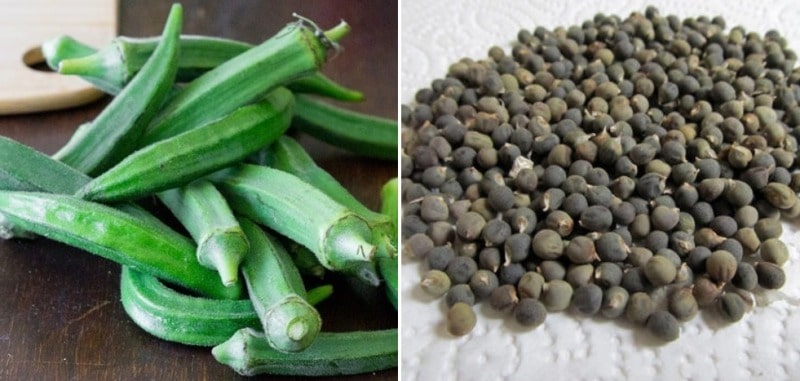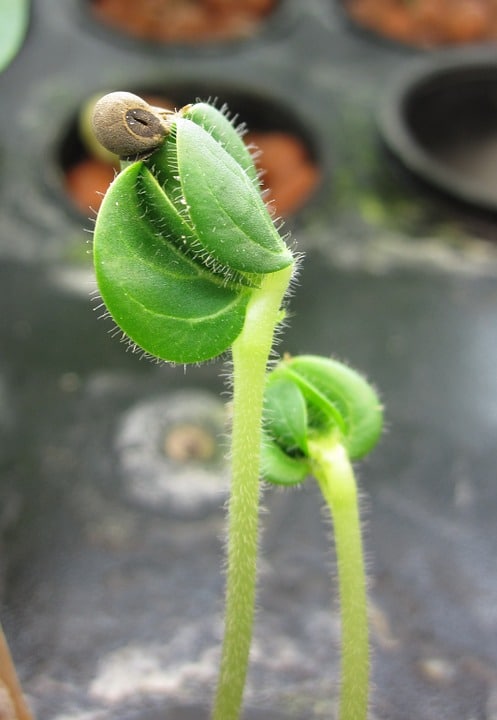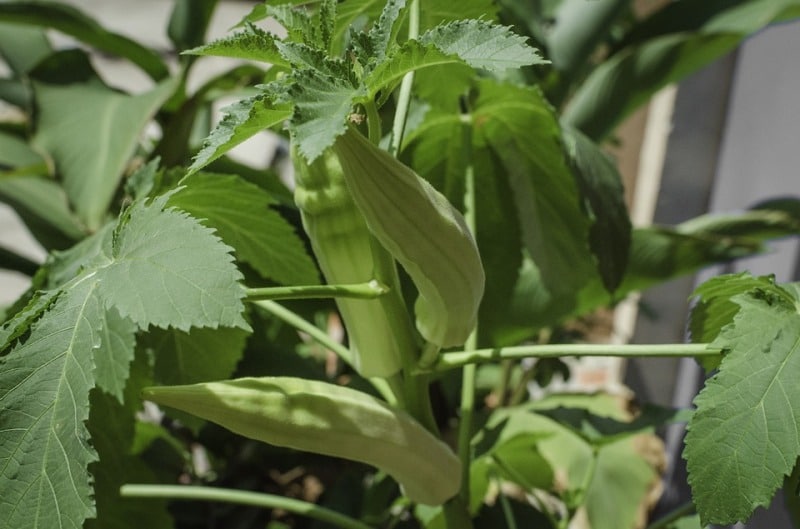A step by step guide for growing okra hydroponically from seed
Today, let us get into the details of growing okra hydroponically (lady’s finger, without soil), hydroponic okra plant care, harvesting procedure of okra in hydroponics. Not all people in many places are familiar with the name Okra, so one might even be wondering “What is Okra?” But lady finger plant is something that everybody knows and most of the people have it in their favorite vegetable list.
Okra is quite easy to grow and looks lovely throughout the growing season due to its beautiful flowers which makes it an ornamental and edible growing plant. It is a native tropical plant and a member of a highly ornamental hibiscus family i.e. Malvaceae. Its beautiful flowers make it as a decorative plant which may reach up to 3 to 5 feet tall. Okra plant prefers warm season and performs very well in warmer climates.
You can grow a garden of okra plants indoors using and hydroponic system. This dedicated soil-less garden system is low-maintenance and utilizes nutrient water without much concern about weather conditions or outdoor temperatures.
Seed germination process of okra in hydroponics
Okra plant is best propagated by using its seeds which is easily available in a variety of nurseries, stores dealing with horticultural supplies and even in online platforms as well. So your first task is to decide which variety to grow as per your growing conditions and purchase good quality okra seeds. Now for germination either you can go with the traditional system of sowing seeds ½ to 1 inch deep in the soil or you can germinate them using grow media, later is the preferred and recommended method when you wish to go forward with hydroponic setup. The reason is soil is not a sterile medium as it has rich soil ecosystem so there are chances of soil-borne pest or disease might spoil your crop.

Before sowing the seeds it is advised to soak okra seeds in room-temperature water for about 24 hours in order to soften the seed coat and this speed ups the sprouting time. Take out the seeds from the water just before planting, and place them on a paper towel.
Push each seed about 1 inch deep into each grows media such as coco-peat or vermiculite or you can directly place the seeds in net pot or container filled with nutrient medium. Place the growing container onto the hydroponic system. This can also be done after the seeds sprout out and seedlings emerge which may take about 12 days.
You may also like How to Grow Saffron in Hydroponics.
The seeds do not have need of much light to germinate, but the new seedlings must be provided with light soon after germination to grow well. Keep the system in place where direct sunlight is available best or you can install the grow lights about six inches from the top of the growing container. Keep the lights on for at least 12 hours each day for best yield.

Okra seed demands moist conditions and a temperature near 75 degrees Fahrenheit to sprout successfully, so make before sowing seed the grow media is sufficiently moistened. Okra has need of thinning out after the seedlings reach 4 to 6 inches tall so Pinch out the extra plants from the system. It is better to raise about 5-10 plants of Okra as the plants yield a pod almost every other day so if you have 10 plants growing at a time, you will get 30-40 pods every week which is enough I believe.
- There are various hydroponic systems suited for growing okra Kratky okra is most famous setup because of its simplicity and it also allows the grower to DIY it as per their requirements other systems are deep water culture, Dutch bucket system and nutrient film technique for large scale production.
The hydroponic nutrient solution for okra
Coming up to okra nutrient solution you can buy any nutrient formula designed for okra or tomato from various platforms dealing with horticultural stuff they have a variety of nutrient.
Add water to the system whenever it appears low due to evaporation or plant’s intake as we cannot let our plants suffer from nutrient stress else such condition will affect the yield drastically and favor diseases. Nutrient enriched water should cover the plant roots at all times. Add hydroponic nutrients to the water each time when more water is added to the system. The most important and tricky part of the hydroponic system which affects the plant growth directly is taking care of pH and EC levels. For growing okra in the hydroponic system, the pH level must be maintained at 6-6.5, EC 2.0-2.4 and PPM 1400-1680.
You may also check Growing Agakara from Seed.
Pest and diseases in growing okra hydroponically
Watch out for aphids and mealybugs don’t roam around your setup during the growing season. Check under the leaves for signs of infestations. Aphids are usually spread by ants. Control ants by simply following desi tips such as sprinkling turmeric powder or boric acid. Mix a teaspoon of neem oil and dish soap together well so that they form a light brown colored creamy texture. Mix it with a liter of water and spray on the plant. It has worked for many experienced growers. You have to spray it regularly for a week for better results.

Harvesting of okra in the hydroponics system
Edible long lady finger-like fruit will start appearing about 50 to 60 days after planting. You can harvest okra when they are three to four inches in length. In the warmer season, check your okra plants every other day for the new growths and harvest them as quickly as they appear this will encourage plant for more pods. Harvest the pods with a stem intact so that it won’t lose its gelatinous juice.
You should not miss Growing Potatoes from Seed.

A pod can grow from nothing to full size within 2 or 3 days. Don’t let the pod ripen on the stalk if you want your plant to produce more pods. Harvest the young pods because they are more nutritious and tender as they mature pods become fibrous and lose its tenderness. Once the plant slows down its production, cut off the plant from the top to one third, so that it will grow side branches to produce more pods. Make sure you wearing gloves when harvesting vegetable or handling plant as it is gelatinous and some people might be sensitive to the stickiness.
That’s all folks about growing okra hydroponically and other cultural practices.
You may also like Red Sandalwood Plantation.
Hi, thanks so much for the article. I followed your method to grow okra and it did bear fruits however the fruit was very hard in texture, and remain hard even after boiling for few minutes. The one I grow in soil media were norma in texture and have moisture in it eventhough it mature 2-3weeks later compared to the hydroponic grown. May I know how was the okra you grown hydroponicaly? I used general fruiting AB solution for the nutrient, thanks